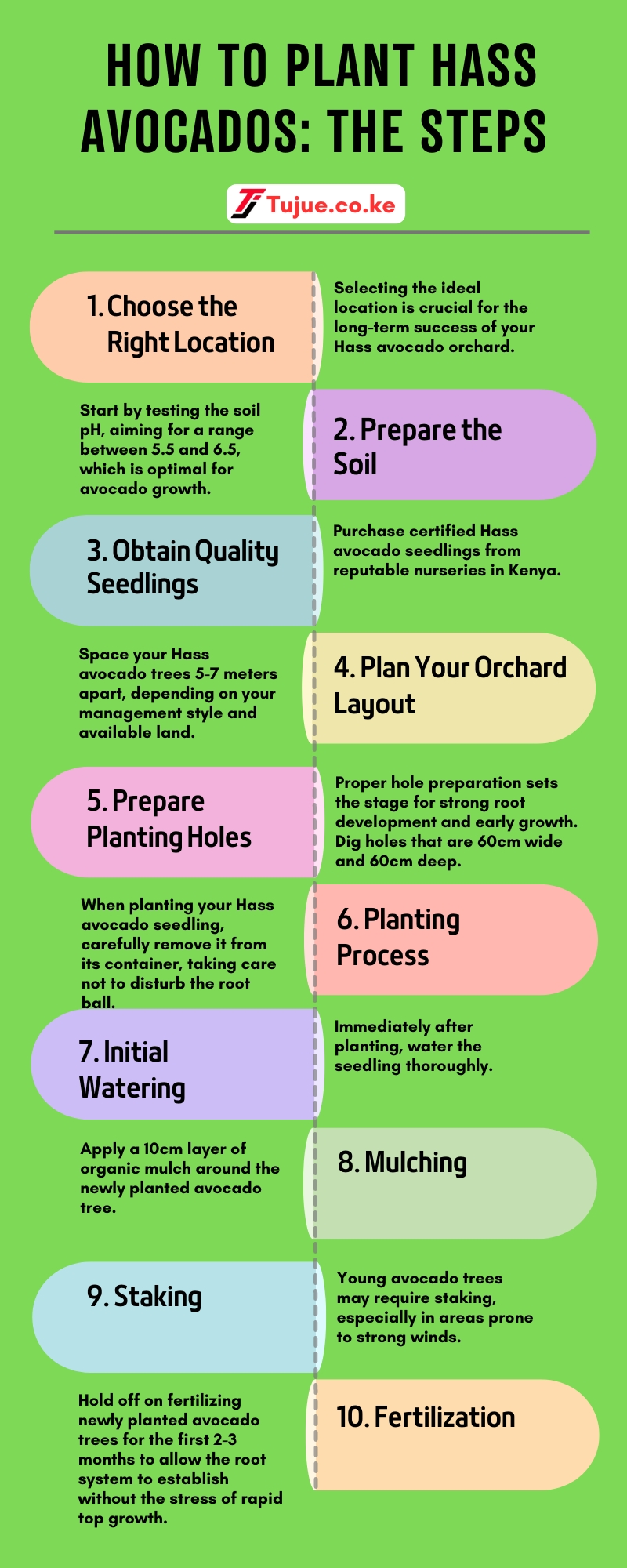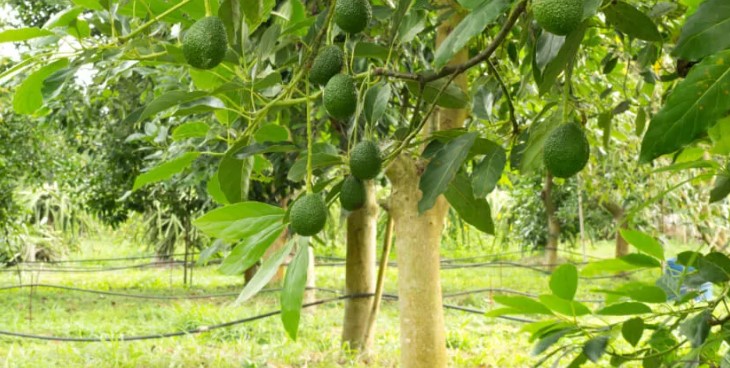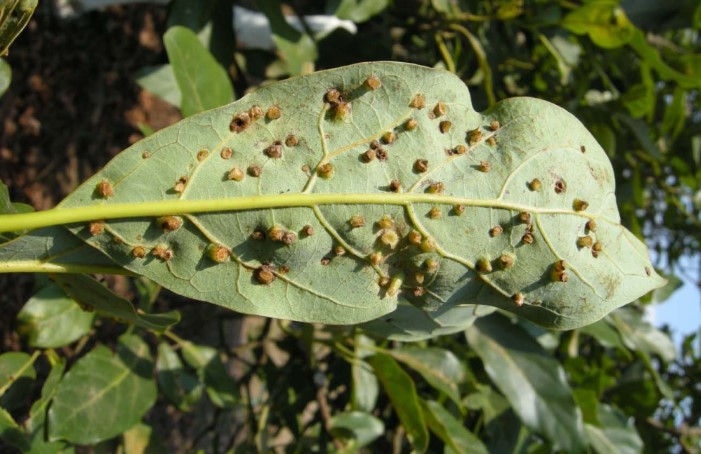Some call it the ‘Green Gold.’ Others call it ‘Nature’s butter.’ However you wish to call it, one thing remains certain: Hass avocados are real money makers! The market is big enough, and you can get your share if you plant the trees right!
Success in this field requires more than just enthusiasm and a plot of land. From understanding the ideal climate conditions and soil requirements to mastering the art of proper irrigation and pest management, Hass avocado farming demands dedication, knowledge, and strategic planning.
This guide will walk you through the essential aspects of Hass avocado cultivation in Kenya, helping you navigate the challenges and capitalize on the opportunities that await in this green gold rush.
Also Read: How to farm yellow beans in Kenya
How to Plant Hass Avocados
Whether you’re a seasoned farmer looking to diversify or a newcomer to agriculture, these actionable steps will help you avoid common pitfalls and maximize your chances of success.
Let’s get started:

How to Plant Hass Avocados Infographic
1. Choose the Right Location
Selecting the ideal location is crucial for the long-term success of your Hass avocado orchard. In Kenya, look for areas with well-draining soil to prevent waterlogging, which can lead to root rot.
Full sun exposure is essential for optimal growth and fruit production. Choose a spot that receives at least 6 hours of direct sunlight daily.
Protection from strong winds is important, as avocado trees are susceptible to wind damage. If your area is prone to strong winds, consider planting windbreaks or choosing a naturally sheltered location.
The ideal altitude for Hass avocados in Kenya ranges from 1,500 to 2,100 meters above sea level, where temperatures are most suitable for avocado cultivation.
2. Prepare the Soil
Start by testing the soil pH, aiming for a range between 5.5 and 6.5, which is optimal for avocado growth. If your soil is too acidic (below 5.5), incorporate agricultural lime to raise the pH.
For alkaline soils (above 6.5), add sulfur to lower the pH. Improving soil drainage is essential, especially in areas with heavy clay soils.
Mix in organic matter such as well-rotted compost or aged manure to enhance soil structure and drainage. This not only improves water movement but also boosts soil fertility and microbial activity, creating an ideal environment for root development.
3. Obtain Quality Seedlings
Purchase certified Hass avocado seedlings from reputable nurseries in Kenya. Look for nurseries that specialize in avocado propagation and have a good track record.
Quality seedlings should be about 1 year old, as they are sturdy enough to transplant but still young enough to adapt well to their new environment. Inspect the seedlings carefully for signs of disease, pest infestation, or poor health.
Healthy seedlings should have vibrant green leaves, a strong stem, and no signs of yellowing or wilting. Ensure the graft union is clearly visible and well-healed.
4. Plan Your Orchard Layout
Space your Hass avocado trees 5-7 meters apart, depending on your management style and available land. This spacing allows enough room for the trees to grow to their full potential without competing for resources.
Consider using a triangular planting pattern instead of the traditional square pattern. This arrangement can increase the number of trees per hectare by about 15% without overcrowding, maximizing your land use efficiency.
When planning your layout, also consider access paths for maintenance, harvesting, and potential irrigation systems. If you’re planting on a slope, arrange rows along the contour lines to help prevent soil erosion and make irrigation more efficient.
5. Prepare Planting Holes
Proper hole preparation sets the stage for strong root development and early growth. Dig holes that are 60cm wide and 60cm deep. This size provides ample space for the young tree’s root system to establish and grow.
The loose soil around the hole makes it easier for roots to penetrate and expand. As you dig, set aside the topsoil and subsoil separately. Mix the excavated topsoil with well-rotted manure or compost at a 3:1 ratio (three parts soil to one part organic matter).
This enriched mixture provides essential nutrients and improves soil structure around the young tree. If your soil is particularly poor or heavy, consider making the planting hole wider to give the tree an even better start.
6. Planting Process
When planting your Hass avocado seedling, carefully remove it from its container, taking care not to disturb the root ball. Place the seedling in the prepared hole, ensuring that the graft union (the swollen area where the scion meets the rootstock) is above soil level.
This is crucial to prevent scion rooting and maintain the desired characteristics of the Hass variety. Backfill the hole with the prepared soil mixture, gently firming it around the roots to eliminate air pockets.
Create a shallow basin around the tree, about 1 meter in diameter, to help retain water during irrigation. This basin will ensure that water reaches the root zone effectively, promoting strong establishment.
7. Initial Watering
Immediately after planting, water the seedling thoroughly. This initial watering serves multiple purposes: it helps settle the soil around the roots, eliminates any remaining air pockets, and provides the necessary moisture for the tree to overcome transplant shock.
Use about 20-30 liters of water per tree, allowing it to soak in slowly. This deep watering encourages roots to grow downward, developing a strong, drought-resistant root system.
Observe how the water is absorbed and adjust the basin if necessary to ensure even distribution around the root zone.
8. Mulching
Apply a 10cm layer of organic mulch around the newly planted avocado tree. Suitable materials include wood chips, straw, or well-rotted compost.
Mulching offers numerous benefits: it helps retain soil moisture, suppresses weed growth, regulates soil temperature, and gradually adds nutrients to the soil as it decomposes.
However, keep the mulch at least 15cm away from the tree trunk to prevent collar rot and pest issues. Extend the mulch to cover the entire watering basin, but avoid piling it up against the trunk. Replenish the mulch layer annually or as needed to maintain its effectiveness.
9. Staking
Young avocado trees may require staking, especially in areas prone to strong winds. Drive a sturdy stake into the ground near the tree, being careful not to damage the root system. The stake should be placed on the windward side of the tree for maximum support.
Use soft, flexible ties to secure the tree to the stake at about two-thirds of its height. Ensure the ties are loose enough to allow some movement, which encourages the development of a strong trunk.
Check and adjust the ties regularly as the tree grows to prevent girdling. Remove the stake after 1-2 years or when the tree is well-established and can stand firmly on its own.
10. Fertilization
Hold off on fertilizing newly planted avocado trees for the first 2-3 months to allow the root system to establish without the stress of rapid top growth. After this period, begin a regular fertilization program using a balanced NPK fertilizer formulated for fruit trees.
Start with small amounts and gradually increase as the tree grows. Apply fertilizer in a ring around the tree, starting about 30cm from the trunk and extending to the drip line. Water thoroughly after each application to help distribute nutrients and prevent root burn.
| Year | Application rate per tree |
|---|---|
| 1 | 1 tbsp (15 ml) nitrogen fertilizer 3 times a year |
| 2 | 0.25 lb (0.11 kg) of actual nitrogen |
| 3 | 0.5 lb (0.23 kg) of actual nitrogen |
| 4 | 0.75 lb (0.34 kg) of actual nitrogen |
| Starting from 5 | 1 lb (0.45 kg) of actual nitrogen per year |
11. Irrigation
Consistent irrigation is critical for young avocado trees, especially during dry spells. In the first year, provide about 20-40 liters of water per week per tree, depending on rainfall and soil conditions.
Water deeply but infrequently to encourage deep root growth. As the tree establishes, gradually reduce the frequency of watering but increase the amount. Use a drip irrigation system or soaker hose for efficient water use.
Monitor soil moisture regularly, adjusting your irrigation schedule based on weather conditions and the tree’s growth stage. Remember that overwatering can be as harmful as underwatering, so strive for consistent, moderate soil moisture.
According to an agronomist and sales manager for Central America, Raúl Nuévalos,
“It’s a plant that needs constant, but carefully managed irrigation…Water deficit can affect growth and production, while too much water can lead to root rot problems…The plant is very sensitive to salinity in the water, so the drip irrigation system also allows greater control of electrical conductivity (EC). Many areas with excess salinity problems are having compact reverse osmosis irrigation water desalination plants installed that are specifically designed with the needs of this crop in mind.”
Hass Avocado Tree Spacing

The standard practice is to space trees 5 meters apart in all directions, creating a uniform grid pattern across the orchard. This 5m x 5m spacing strikes a balance between maximizing land use and providing adequate room for tree growth and orchard operations.
Note: It’s worth noting that some farmers in Kenya are experimenting with higher-density plantings, using spacings like 4m x 4m or even 3m x 3m. These layouts require more intensive management and regular pruning to control tree size but can increase early yields per hectare.
However, the 5m x 5m spacing remains the most widely recommended for its balance of productivity and manageability in Kenyan conditions.
Avocado Irrigation Requirements
In Kenya, proper irrigation is crucial for successful Hass avocado cultivation. While some areas may support rain-fed avocado production, most commercial orchards require supplemental irrigation to ensure consistent yields and tree health.
Here’s a detailed look at avocado irrigation requirements:
Rainfall and Water Needs:
Avocados thrive in areas receiving over 1000 mm of annual rainfall, ideally distributed throughout the year. However, a brief two-month drier period before flowering can be beneficial for triggering uniform bloom.
In practice, most Kenyan avocado farmers find that irrigation is necessary to meet the trees’ water demands consistently.
Weekly Water Requirements:
On average, avocado trees need about 25 mm of water per week. This translates to approximately 25 liters per square meter of the tree’s canopy area.
Irrigation Methods:
Two primary irrigation methods are recommended for avocados in Kenya:
1. Drip Irrigation: Offers precise water delivery directly to the root zone, minimizing water loss.
2. Micro-Sprinklers: Provide wider coverage and can help in humidity management.
Both methods can be effective, but the choice depends on factors like water availability, soil type, and orchard layout.
Pests and Diseases Control in Hass Avocado Farming in Kenya

Farmers employ both organic methods and chemical controls to protect their avocados. Let’s take a look:
1. Avocado Thrips:
These tiny insects damage young fruit, causing scarring and reducing marketability. Control methods include:
– Pruning to improve air circulation
– Application of neem-based insecticides for organic control
– Targeted chemical sprays when populations exceed economic thresholds
2. Fruit Flies:
These pests lay eggs in ripening fruit, leading to internal damage. Management strategies include:
– Setting up pheromone traps for monitoring and mass trapping
– Orchard sanitation by removing fallen fruit
– Bagging fruit as it matures
– Application of fruit fly baits on tree trunks
3. False Codling Moth:
This pest bores into fruit, causing premature drop and decay. Control measures include:
– Pheromone disruption techniques
– Regular scouting and removal of infested fruit
– Use of biological control agents like parasitic wasps
– Targeted insecticide applications during peak moth activity
4. Scales:
These sap-sucking insects can weaken trees and reduce yields. Control methods include:
– Encouraging natural predators like ladybirds
– Pruning to improve air circulation and reduce habitat
– Application of horticultural oils
– Systemic insecticides for severe infestations
5. Red Spider Mites:
These tiny arachnids can cause leaf damage and defoliation. Management techniques include:
– Maintaining proper irrigation to reduce tree stress
– Introducing predatory mites
– Application of sulfur-based sprays for organic control
– Use of miticides when populations are high
According to Professor Paul Kimurto from Eagerton University:
“We have witnessed a range of pests and diseases that are difficult to manage in the region like Fall Army Worm, among others as well as the soil profile has degenerated which means that it is high time our farmers to embrace Hass Avocado farming which has high yields and resistant to diseases and pests which are common.”
Common Diseases
Here are some diseases you might expect to see in your Hass Avocados
1. Root Rot (Phytophthora cinnamomi):
This fungal disease is a significant threat to avocado production in Kenya.
Symptoms:
– Pale-green and wilted leaves
– Sunburned and dying branches
– Overall tree decline
Control and Prevention:
– Uprooting and destroying affected trees
– Improving soil drainage through raised beds or mounding
– Treating seeds and nursery stock with hot water and fungicides
– Selecting resistant rootstocks
– Avoiding over-irrigation and maintaining proper soil aeration
2. Anthracnose:
This fungal disease primarily affects fruit quality and marketability.
Symptoms:
– Dark brown spots on fruit
– Abnormal fruit development
– Premature fruit drop
Control Measures:
– Implementing proper orchard sanitation practices
– Pruning to improve air circulation
– Regular application of copper-based fungicides
– Harvesting fruit at the correct maturity to reduce susceptibility
Regions Where Hass Avocado Perform Well
These areas have traditionally been the heartland of Hass avocado production in Kenya, benefiting from suitable altitude, rainfall patterns, and soil conditions.
Speaking to Yahoo, Delmonte Kenya Managing Director Stergios Gkaliamoutsas said that:
“Kenya is located at the tropics and at an altitude of 5,000 feet above sea level, which offers ideal climatic conditions throughout the year with low humidity and mild temperatures…The Hass variety of avocados offered by the Kenyan operation are preferred in the market over other varieties…Their high quality, long shelf life, convenient size and shape and excellent organoleptic properties (characteristics that make food appeal to the senses) make them suitable for fine gourmet as well as daily consumption.”
Some good locations for Hass avocado farming in Kenya include:
1. Murang’a
2. Nyeri
3. Kiambu
4. Kisii
5. Meru
6. Central Kenya region
7. Nakuru
8. Eldoret
Emerging Avocado Farming Regions:
1. Nandi
2. Bomet
3. Uasin Gishu
4. Trans-Nzoia
5. Bungoma
6. Siaya
Potential Areas with Irrigation:
1. Machakos
2. Embu
3. Parts of Mbooni
4. Kang’undo
5. Mua Hills
6. Kathiani
Hass Avocado Yield per Tree in Kenya
The yield of Hass avocados increases progressively as the trees mature, offering a long-term investment opportunity for Kenyan farmers.
Let’s break down the yield expectations at different stages of tree maturity:
Early Production (Years 2-3):
Hass avocado trees in Kenya typically begin bearing fruit in their second or third year after planting. During this initial production phase:
– Yield per tree: 70-100 fruits
Increasing Yield (Years 4-5):
As the trees mature and develop a more extensive root system and canopy, production increases significantly:
– Yield per tree: 400-800 fruits per season
– Yield per acre: 60,000 to 120,000 fruits (assuming standard spacing of about 150 trees per acre)
Peak Production (Years 6-7 and beyond):
Trees reach their full productive potential around the sixth or seventh year:
– Yield per tree: Up to 1000 fruits per year
Hass Avocado Market
Beyond its domestic consumption, Kenya also exports the bulk of its avocados to many destinations across the world. These include:
1. European Union countries
2. Middle Eastern nations
3. Russia, where exotic fruits are gaining traction in urban markets
4. Singapore
5. Egypt
6. Hong Kong
How Much Can you Earn with Hass Avocado Farming? Is it Profitable?
The potential earnings from Hass avocados in Kenya can vary widely depending on several factors. I’ll provide you with some insights, but please note that exact figures can fluctuate based on market conditions, farm size, and other variables.
For small-scale farmers:
A small-scale farmer with about 1 acre (0.4 hectares) of land dedicated to Hass avocados might expect to earn between 100,000 to 300,000 Kenyan Shillings (approximately $900 to $2,700 USD) per year, once the trees reach full maturity.
For medium to large-scale farmers:
Some reports suggest that a well-managed hectare (2.47 acres) of Hass avocados can generate anywhere from 500,000 to 1,000,000 Kenyan Shillings (about $4,500 to $9,000 USD) per year.
Note: These figures increase with the size of land and number of trees.
Happy Farming!
Hass avocado farming in Kenya presents a promising opportunity for both small-scale and large-scale farmers. While the journey from planting to harvesting requires patience, as trees take several years to mature and reach full production, the long-term rewards can be sweet.
Farmers who embrace best practices in irrigation, pest management, and soil health can expect to see higher yields and better quality fruits, translating to improved earnings.We hope this information will help you become a recognized Hass avocado farmer!

